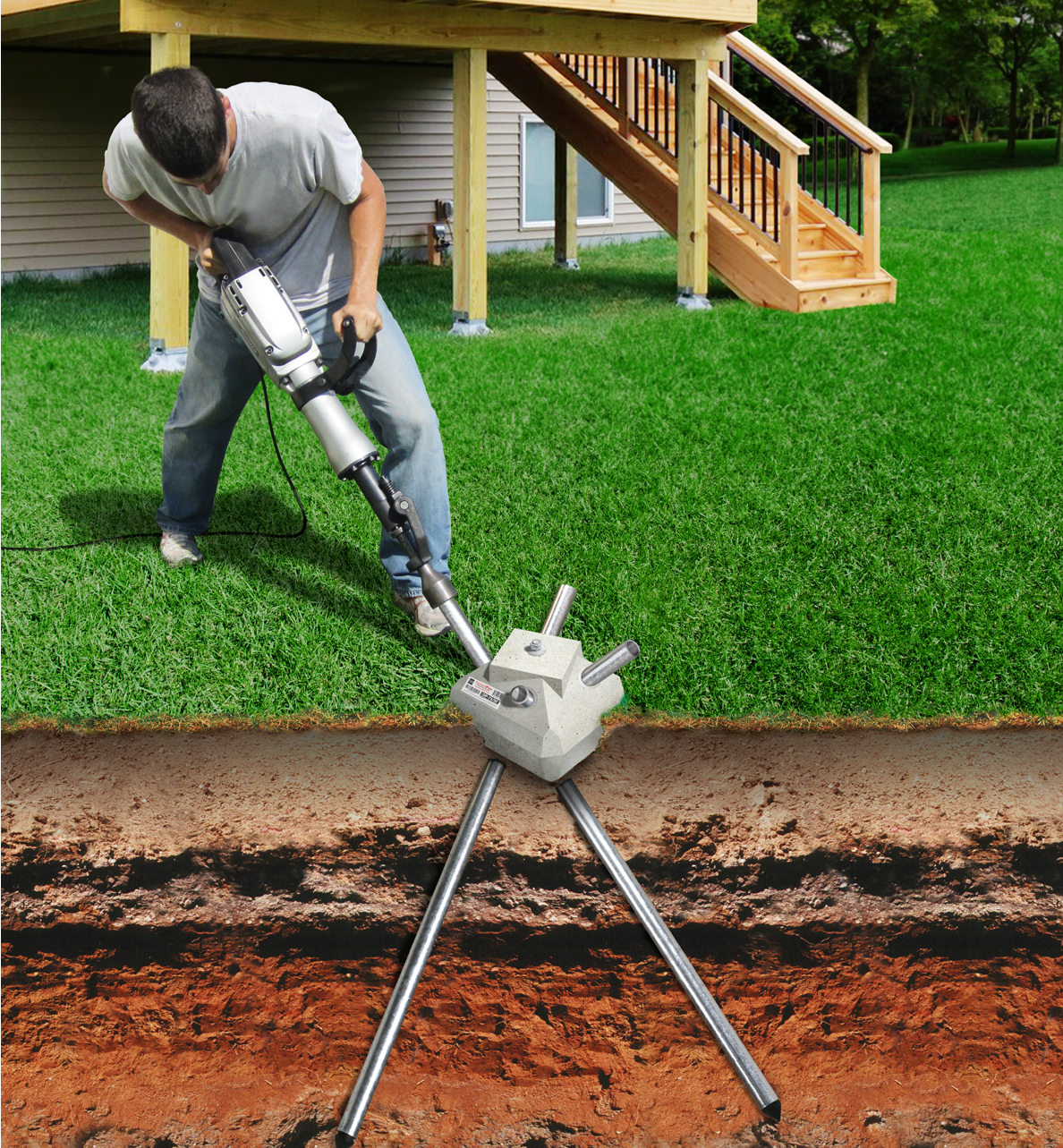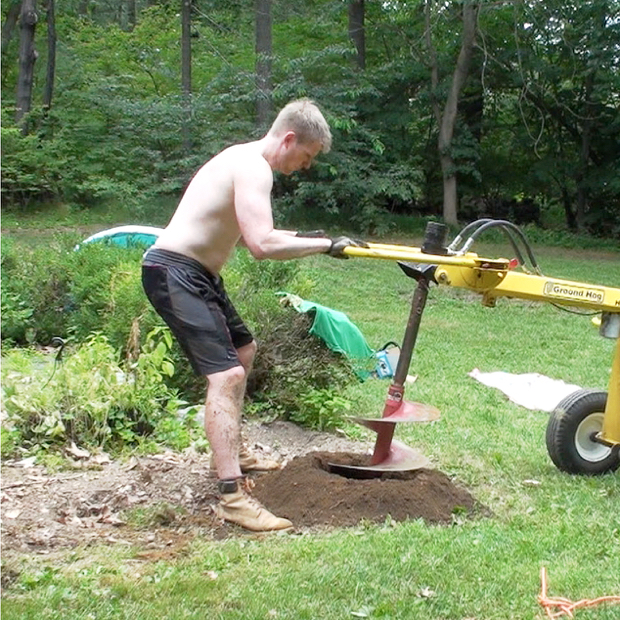A Strong Foundation for Your Oasis: Discovering the Relevance of Deck Footings in Outdoor Frameworks
Wiki Article
Expert Tips for Installing Deck Footings to Assistance Your Outdoor Area
When it concerns constructing a deck, one of one of the most important components to consider is the setup of correct footings. These footings are the foundation whereupon your outside area will relax, offering stability and assistance for many years to come. Yet what specifically does it take to install deck footings correctly? In this discussion, we will check out experienced pointers and strategies that can aid ensure a effective and long lasting deck installment. From choosing the ideal kind of footings to avoiding typical blunders, we will offer you with the knowledge and insights you need to confidently start your deck-building trip. Allow's dive right in and uncover the secret to a durable and solid outdoor space.Significance of Appropriate Deck Footings
Appropriate deck footings are crucial for making sure the security and durability of your outside space. When building a deck, it is important to take notice of the foundation on which it will certainly rest. Deck footings supply the required assistance for the entire structure and aid disperse the weight uniformly - Deck Footings. Without strong and correctly installed footings, your deck might become unpredictable, resulting in safety risks and expensive fixings.
In enhancement to security, proper deck grounds additionally contribute to the durability of your exterior space (Deck Footings). Grounds that are developed and created to hold up against the aspects and dirt conditions in your area will help avoid the deck from clearing up or changing gradually. By ensuring the grounds are correctly sized and installed, you can reduce the threat of damage to the deck structure, expanding its life expectancy and minimizing the demand for pricey repair work or replacements

Picking the Right Kind of Footings
When picking the appropriate type of footings for your deck, it is essential to think about aspects such as dirt conditions, neighborhood building regulations, and the overall style of your outdoor room. The sort of footing you choose will play a vital role in making certain the stability and durability of your deck.One common kind of ground is the concrete footing. Concrete footings are appropriate for many dirt conditions and provide superb assistance for decks.
In many cases, you may require to make use of customized footings, such as pile footings or deep foundations, if you are constructing a large or multi-level deck. These grounds are developed to disperse the weight of the deck over a bigger area, ensuring stability and stopping sinking or clearing up.
Before picking a sort of ground, it is vital to seek advice from local building ordinance and laws to ensure compliance. In addition, consider the style and meant use of your outside area. Variables such as the size, form, and load-bearing requirements of your deck will influence the kind of footing that is most suitable.
Preparing the Ground for Footing Setup
To properly prepare the ground for footing setup, it is essential to assess the dirt problems and take essential actions to guarantee security and resilience of the deck. The initial step is to dig deep into the location where the grounds will be mounted.Once the area has been excavated, the following action is to compact the dirt. This can be done making use of a plate compactor or by utilizing a hand meddle. Compacting the dirt assists to eliminate any kind of voids or air pockets, which can bring about resolving and instability over time.
After compacting the dirt, it is very important to lay a layer of crushed rock or crushed rock at the end of the excavation. This will give drainage and aid to stop water from pooling around the grounds, which can bring about disintegration and instability.
Step-by-Step Overview to Setting Up Deck Footings
After correctly preparing the ground for footing installment, the next action is to begin the procedure of installing deck grounds. This detailed guide will certainly offer you with a clear understanding of how to mount deck grounds for your outdoor space.Figure out the place: Begin by noting the placements of the deck footings utilizing stakes and string. Ensure that the areas align with the layout and format of your deck.
Dig the openings: Utilize a post opening digger or an auger to dig the openings for the grounds. The depth and diameter of the holes should remain in accordance with neighborhood building ordinance and the particular demands of your deck layout.
Degree the holes: Use a level to make certain that the openings are dug to the appropriate depth and are degree with each other. (Deck you can check here Footings)
Add crushed rock: Place a layer of crushed rock at the end of each hole to improve drainage and avoid the timber from rotting.
Put the grounds: Put the footings right into the openings, seeing to it they are level and plumb. Use a level and a gauging tape to ensure accuracy.
Secure the grounds: Pour concrete into the holes around the grounds, loading them to the top. Utilize an article degree to guarantee the grounds remain level as the concrete sets.
Allow time for curing: Let the concrete cure according to the producer's guidelines prior to continuing with the deck building.
Typical Mistakes to Stay Clear Of During Footing Setup
One important element to take into consideration throughout the installation of deck grounds is preventing usual blunders that can endanger the security and longevity of your outside room. While deck grounds might appear like a easy and simple part of the construction procedure, overlooking specific variables can bring about expensive fixings and prospective safety and security risks down the line.
In addition, ignoring to set up appropriate drain steps can cause water to collect around the footings, resulting in rot, decay, and the ultimate weakening of the deck's foundation. Making use of the incorrect type of footing material or falling short to properly safeguard the footings can compromise their structural honesty.
To prevent these blunders, it is necessary to seek advice from a professional or adhere to sector standards to guarantee correct footing setup. By doing so, go to this site you can make certain the stability and longevity of your outside space, supplying a safe and satisfying setting for several years to find.
Verdict
Finally, setting up correct deck footings is critical for the stability and longevity of your outside area. By choosing the ideal type of footings and properly preparing the ground, you can ensure a solid foundation for your deck. Adhering to a detailed guide and staying clear of common errors throughout footing setup will certainly further boost the toughness and security of your deck.Appropriate deck footings are important for guaranteeing the security and longevity of your outside area. The grounds serve as a connection between the deck and the ground, allowing the weight of the deck and its residents to be dispersed equally right into the dirt.One common type of footing is the concrete click here for more info footing. Put the grounds: Position the grounds into the holes, making certain they are degree and plumb. Safeguard the footings: Put concrete right into the holes around the footings, filling them to the top.
Report this wiki page